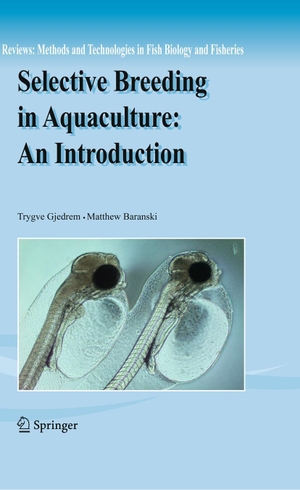Für statistische Zwecke und um bestmögliche Funktionalität zu bieten, speichert diese Website Cookies auf Ihrem Gerät. Das Speichern von Cookies kann in den Browser-Einstellungen deaktiviert werden. Wenn Sie die Website weiter nutzen, stimmen Sie der Verwendung von Cookies zu.
Cookie akzeptieren
Trygve Gjedrem / Matthew Baranski
Selective Breeding in Aquaculture: An Introduction
- Springer-Verlag GmbH
- 2009
- Gebunden
- ISBN 9789048127726
The foundation of quantitative genetics theory was developed during the last century and facilitated many successful breeding programs for cultivated plants and t- restrial livestock. The results have been almost universally impressive, and today nearly all agricultural production utilises genetically improved seed and animals. The aquaculture industry can learn a great deal from these experiences, because the basic theory behind selective breeding is the same for all species. The ?rst published selection experiments in aquaculture started in 1920 s to improve disease resistance in ?sh, but it was not before the 1970 s that the ?rst family based breeding program was initiated for Atlantic salmon in
Mehr
Weniger
zzgl. Versand
Auf Lager